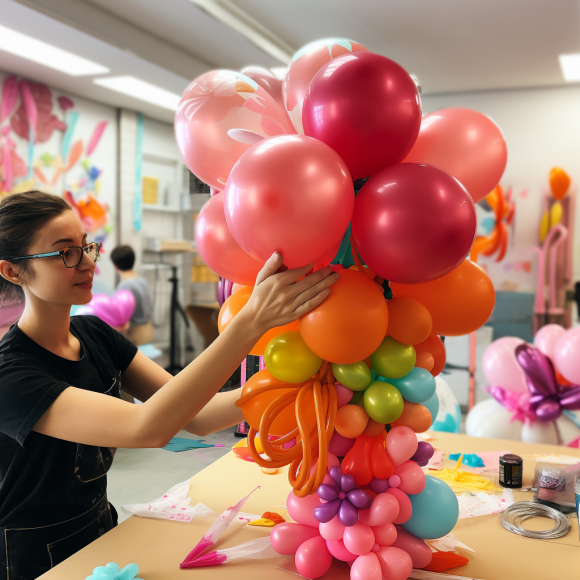The world of balloon sculpting is a vibrant realm where simple balloons transform into captivating creations. But this transformation requires more than just imagination – it demands a mastery of various techniques. This guide equips you with a roadmap to navigate the exciting journey of balloon sculpting, from fundamental twists to crafting elaborate designs.
Building the Foundation: Essential Twists
A strong foundation is crucial for any aspiring balloon sculptor. Mastering these essential techniques will equip you to create the building blocks for more elaborate creations:
- The Basic Twist: This fundamental skill involves pinching the balloon at a desired point and twisting both ends in opposite directions until they meet. Mastering this allows you to create the basic units of many sculptures – loops, stems, and bubbles.
- The Pinch Twist (Ear Twist): Create a small one-inch bubble by pinching the balloon and twisting a single section. This twist is essential for forming details like animal ears, fingers, and other intricate features.
- The Reverse Twist: Similar to the basic twist, but the twist direction is reversed. This creates a tighter hold, often used to secure complex shapes and prevent them from unraveling.
- The Chain Twist: Perform consecutive basic twists along the length of the balloon to create multiple connected loops. This technique forms tails, arms, and flowing features like hair or a serpent’s body.
Expanding Your Repertoire: Intermediate Techniques
Once you’ve grasped the basics, it’s time to expand your sculpting vocabulary with intermediate techniques that open doors to more intricate creations:
- The Bubble Twist: This technique involves creating a series of connected bubbles in varying sizes, adding both dimension and texture to your sculptures. It allows you to create realistic features like animal eyes, flower petals, or even clouds.
- The Neck Twist: This technique is used for creating heads and necks on animals. It involves twisting a section of the balloon several times to form a narrower section, differentiating the head from the body.
- Color Blocking: Combine balloons of different colors by twisting them together at the base. This creates visually striking patterns and adds depth to your creations, allowing for complex color schemes and striped effects.
- The Hidden Knot: This technique allows for seemingly impossible connections, where one balloon appears to magically emerge from another. It’s a valuable tool for creating figures with multiple limbs or intricate details that seem to defy logic.
Pushing the Boundaries: Advanced Techniques
For experienced balloon sculptors, the possibilities are boundless. Advanced techniques involve intricate combinations of basic and intermediate twists, allowing for the creation of highly detailed and lifelike sculptures:
- Double Stuffing: Insert one inflated balloon inside another, creating a thicker and more vibrant structure ideal for larger animals or characters. This technique adds volume and allows for more complex color combinations within a single balloon.
- Balloon Linking: Connect multiple balloons together to form complex shapes and large-scale structures. This technique requires careful planning and precise twisting to ensure a sturdy and visually cohesive sculpture.
- Balloon Marbling: This technique involves twisting balloons of different colors together before inflation. The result is a stunning blend of colors within the finished sculpture, creating a mesmerizing marbled effect that adds a unique touch to your creations.
Practice Makes Perfect: Honing Your Skills
The key to mastering balloon sculpting lies in consistent practice. Here are some tips to refine your skills:
- Experiment with different techniques: Try replicating balloon creations from tutorials, but also don’t be afraid to let your creativity flow and explore your own ideas.
- Embrace online resources: Utilize online tutorials, balloon sculpting books, and online communities to learn from experienced artists and discover new techniques.
- Find inspiration: Look to the natural world, art, children’s literature, and even everyday objects for creative fuel.
From Basic Twists to Advanced Creations:
With dedication and a passion for creativity, you can navigate the exciting journey of balloon sculpting. By mastering fundamental twists, exploring intermediate techniques, and venturing into advanced creations, you’ll transform simple balloons into captivating works of art. So, grab your balloons, get twisting, and unleash the artist within you!


